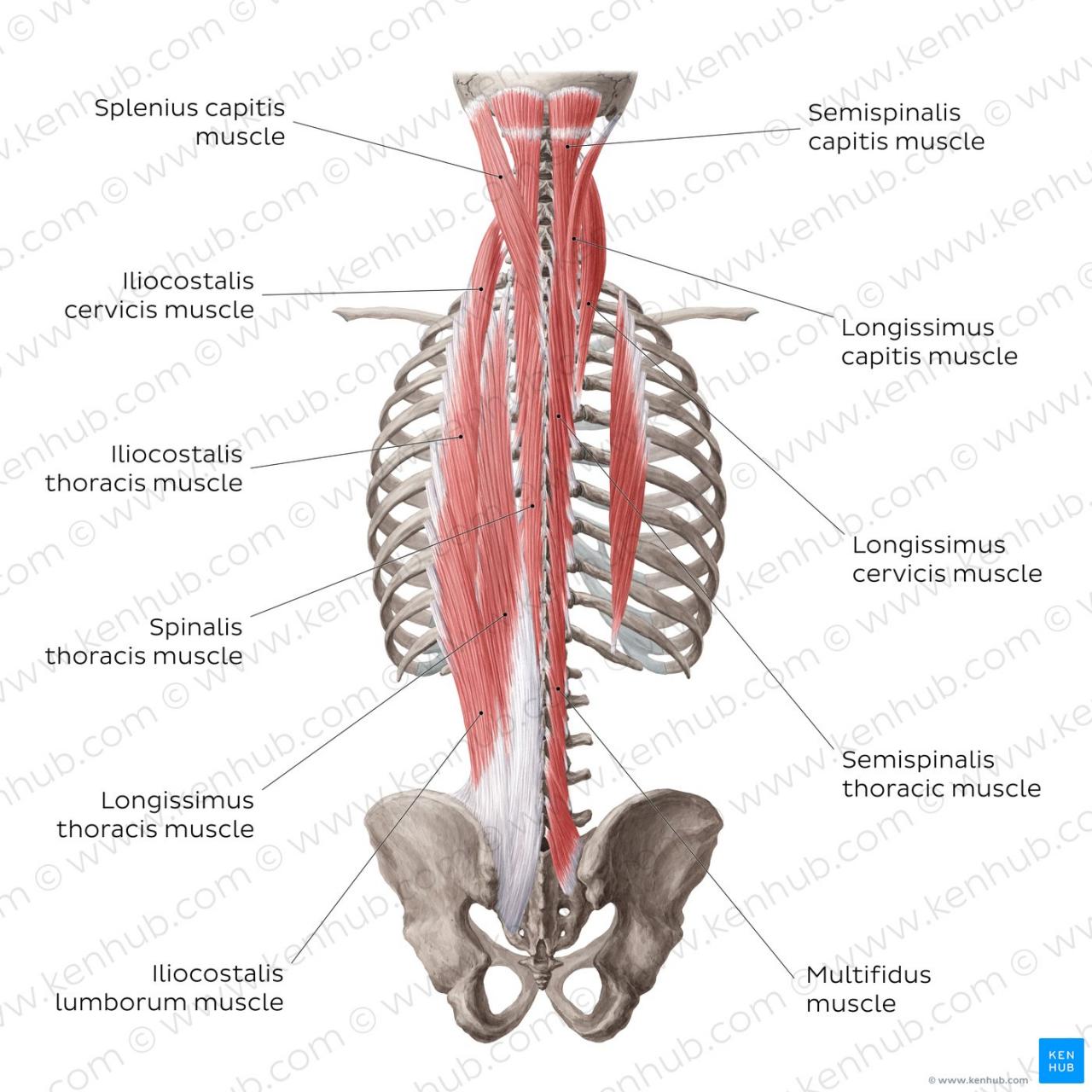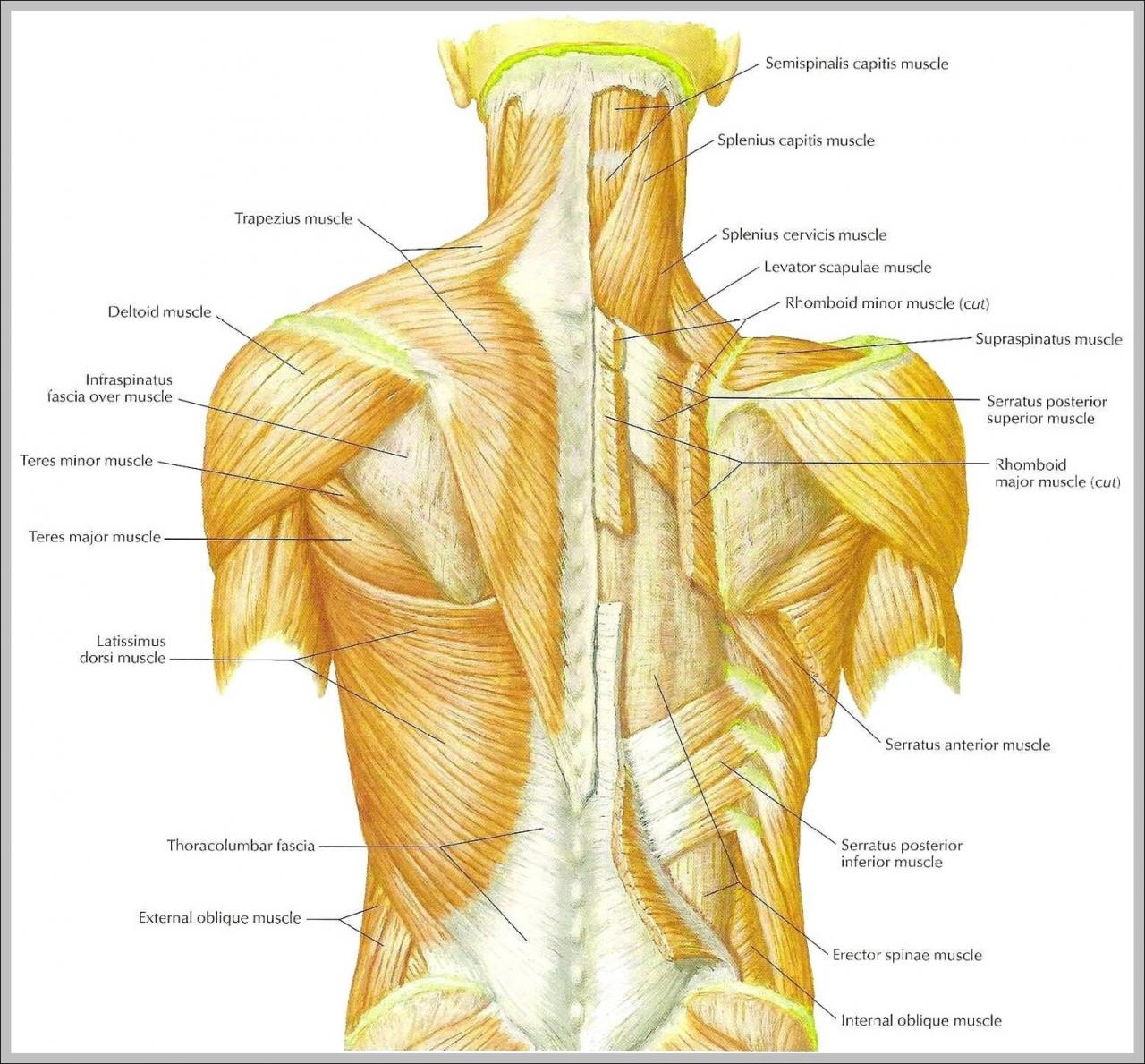
Back muscles, often overlooked, play a pivotal role in our overall well-being and athleticism. From maintaining proper posture to reducing the risk of injuries and boosting performance, these muscles deserve our attention. Dive into this comprehensive guide to unravel the secrets of back muscles and unlock their full potential.
In this article, we’ll explore the anatomy of back muscles, delve into exercises that effectively target them, discuss common injuries and their treatments, highlight the importance of strong back muscles, and provide tips for recovery and rehabilitation. Additionally, we’ll uncover the causes and consequences of back muscle imbalances and explore the role of nutrition in supporting back muscle development.
Back Muscles: Anatomy, Exercises, Injuries, and Recovery

The back muscles play a crucial role in posture, movement, and overall physical health. Understanding their anatomy, functions, and common injuries is essential for maintaining a strong and healthy back.
Anatomy of Back Muscles
The back muscles consist of several layers that work together to provide support, mobility, and protection. The major back muscles include:
- Latissimus dorsi:A large, fan-shaped muscle that extends from the lower back to the armpits, responsible for pulling the arms downward and backward.
- Trapezius:A triangular muscle that extends from the base of the skull to the middle of the back, responsible for elevating and rotating the shoulder blades.
- Rhomboids:A group of muscles that connect the shoulder blades to the spine, responsible for pulling the shoulder blades together and upward.
Exercises for Back Muscles
Compound exercises that effectively target the back muscles include:
- Barbell row:Lie face down on a bench with a barbell in your hands. Pull the barbell up towards your chest, keeping your back straight.
- Pull-up:Hang from a bar with your palms facing you. Pull yourself up until your chin reaches the bar.
- Lat pulldown:Sit at a lat pulldown machine and pull the bar down towards your chest.
Common Back Muscle Injuries
Common back muscle injuries include:
| Injury | Causes | Symptoms |
|---|---|---|
| Strain: | Overuse or improper lifting | Pain, stiffness, and muscle spasms |
| Sprain: | Tearing of a ligament | Pain, swelling, and instability |
| Herniated disc: | Rupture of the disc between vertebrae | Pain, numbness, and weakness in the legs |
Importance of Strong Back Muscles
Strong back muscles provide several benefits, including:
| Benefit | Area |
|---|---|
| Improved posture: | Supports the spine and prevents slouching |
| Reduced risk of injury: | Stabilizes the back and protects it from strains and sprains |
| Enhanced athletic performance: | Improves power and explosiveness in sports |
Recovery and Rehabilitation for Back Muscles
After back muscle workouts, rest and recovery are essential. A sample recovery plan includes:
- Stretching:Perform gentle stretches to improve flexibility and reduce muscle tension.
- Foam rolling:Use a foam roller to massage and release tension in the back muscles.
- Massage:Seek professional massage to alleviate muscle soreness and promote relaxation.
Back Muscle Imbalances, Back muscles
Imbalances in back muscles can occur due to poor posture, improper exercise technique, or uneven muscle development. This can lead to:
- Pain and discomfort
- Reduced mobility
- Increased risk of injury
Exercises that help correct imbalances include:
- Dumbbell row:Stand with your feet shoulder-width apart and hold a dumbbell in each hand. Bend forward at the waist and row the dumbbells up towards your chest.
- Reverse fly:Lie face down on a bench with your feet secured. Hold dumbbells in your hands and raise your arms out to the sides.
Nutrition for Back Muscle Development
Nutrition plays a crucial role in supporting back muscle growth and recovery. A sample meal plan includes:
- Breakfast:Oatmeal with fruit and nuts
- Lunch:Grilled chicken salad with brown rice
- Dinner:Salmon with roasted vegetables and quinoa
Final Review: Back Muscles

Understanding the significance of back muscles empowers us to take proactive measures in maintaining their health and strength. By incorporating targeted exercises, practicing proper recovery techniques, and adopting a balanced diet, we can unlock the full potential of these muscles and reap the numerous benefits they offer.
Remember, a strong and healthy back is essential for an active and fulfilling life.
FAQ Explained
What are the major back muscles?
As Mother’s Day approaches, happy mothers day wishes offer heartfelt expressions of love, appreciation, and gratitude for all the sacrifices and unwavering support mothers provide. From heartfelt poems to thoughtful gifts, these wishes aim to convey the immense bond and affection shared between mothers and their children.
The major back muscles include the latissimus dorsi, trapezius, and rhomboids.
What are the benefits of strong back muscles?
In remembrance of those who have lost their mothers, happy heavenly mother’s day mom provides a platform to share memories, express love, and honor the enduring connection between mothers and their loved ones.
Strong back muscles improve posture, reduce the risk of injuries, and enhance athletic performance.
What are common back muscle injuries?
In a heartfelt tribute, happy heavenly mother’s day mom pays homage to the cherished memories of mothers who have passed away. The day is a poignant reminder of the unbreakable bond between mothers and children, even after life’s journey ends.
Common back muscle injuries include strains, sprains, and herniated discs.
How can I recover from a back muscle injury?
As Mother’s Day is celebrated, happy heavenly mother’s day mom offers a poignant reminder of the eternal bond between mothers and their children, transcending time and distance.
Rest, ice, compression, and elevation (RICE) are effective for recovering from back muscle injuries.
What foods support back muscle development?
For those experiencing lower back pain, exercises to relieve lower back pain can provide much-needed relief. These targeted exercises help strengthen muscles, improve flexibility, and alleviate discomfort, empowering individuals to regain mobility and well-being.
Foods rich in protein, carbohydrates, and healthy fats are essential for supporting back muscle development.






